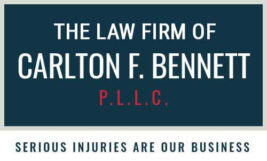Nursing homes play a valuable role in today’s society. Unfortunately, though, not every nursing home provides the same level of care. In fact, some facilities lack sufficient staff to do the job correctly. While researching a nursing home before placing a loved one there is a good idea, you may not be able to completely eliminate the chances of nursing home abuse.
If you suspect an aging loved one is the victim of abuse in a long-term care facility, you must act quickly to stop the abuse. Whether you plan to file a complaint with the facility or take your concerns to state or federal authorities, you must have some evidence of mistreatment. Here are five steps for documenting nursing home abuse.
1. Get as many facts as possible
Aging individuals may not be able to advocate for themselves. If you suspect nursing home abuse, you must get as many facts as possible. Talk to everyone who interacts with your loved one and ask them to watch for signs of abuse.
2. Write a journal
A single incident may not be sufficient to prove nursing home abuse. For a concrete case, you need detailed information about ongoing issues. Therefore, create a comprehensive journal of what you see. Use it to describe the conditions or medical issues you observe. Also, write down the names of everyone involved in the abuse or neglect of your loved one.
3. Find witnesses
Witnesses may notice nursing home abuse, even if you do not. If someone tells you about mistreatment or neglect, be sure to record his or her name and contact information. Also, ask the person to give you a written statement about what transpired.
4. Take some photos
A picture is worth a thousand words. If you see bruises, bedsores, lacerations or other signs of abuse, snap some photos. Further, if your loved one tells you about abuse, film a video testimonial.
5. Gather records
Not all nursing home abuse is visible. On the contrary, if your loved one misses medication or receives the wrong treatment, he or she may be the victim of abuse. To uncover this type of abuse, you need medical records.
If you are fortunate, you never have to worry about documenting nursing home abuse. Still, elder abuse in long-term care facilities is probably more common than you think. With the right documentation, you are in a good position to advocate for your aging loved one.

 March 29, 2019
March 29, 2019